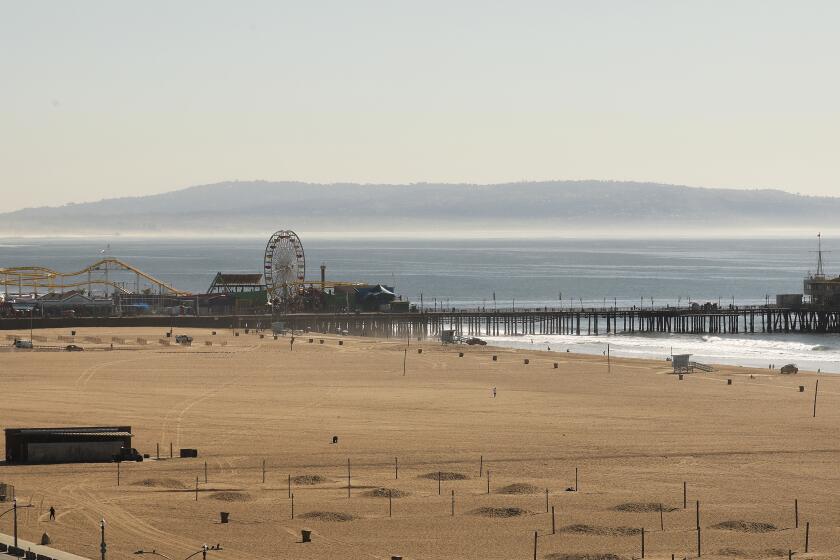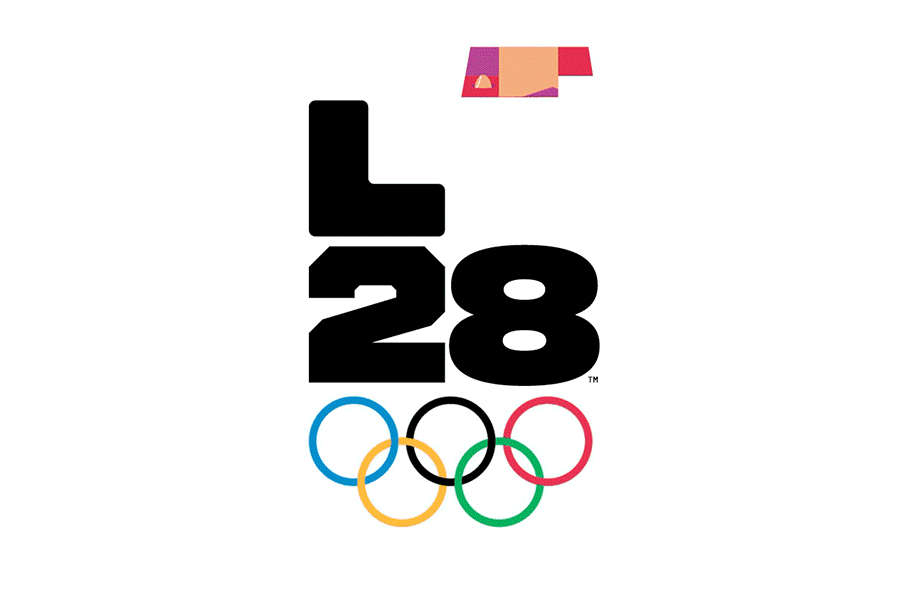SAILING : America’s Cup ‘Exhibition’ Race Is Today
SAN DIEGO — The new International America’s Cup Class sailboats will race formally for the first time off San Diego today, and observers are cautioned not to take the results too seriously.
Or too casually.
Nine boats from six countries are entered in the event billed as the Pre-Worlds Regatta, which is as relevant to the America’s Cup as an NFL exhibition is to the Super Bowl. The real IACC World Championship starts Saturday, with five days of fleet racing followed by semifinal and final matching racing among the top four boats May 10-11.
That won’t mean much more, because several syndicates planning to compete for the Cup starting next January don’t have boats yet, and the strongest players won’t even be sailing the same boats they’ll sail in ’92. But these 11 days will offer some clues as to which teams are on the right track.
If it were a beauty contest, even most of his rivals would declare Dennis Conner’s Stars & Stripes the winner, with its midnight-blue hull and gold-leaf graphics.
But is it fast?
Bruce Nelson, one of Conner’s designers, spoke for his colleagues when he said, “We’re going to be keenly interested to see what shakes out there.”
All anyone knows about the new boats with reasonable certainty is that they’re faster than the smaller but heavier 12-meters that sailed every Cup from 1958 to ’87.
The designers, with San Diego’s light-to-moderate winds in mind, agreed to three maximum dimensions for the new boats: a mast height of 32.5 meters (106 feet 7 1/2 inches), a beam (width) of 5.5 meters (18 feet 1/2 inch) and a draft (keel depth) of 4 meters (13 feet 1 1/2 inches). Any boat not built to those maximums would be sacrificing performance.
Beyond that, they can balance variations in sail area, ballast and boat length within the IACC formula--the explanation of which requires a rocket scientist.
For example, everybody refers to the boats as being 75 feet long overall. But are they?
“I wish I knew the answer to that,” Nelson said.
” . . . Everybody says their boat is 75 feet, but probably nobody’s is actually 75 feet.”
Ordinarily, length means speed, but not necessarily if it means sacrificing sail area or ballast. So the designers need to know now what the best combination is.
Racing today and Thursday starts at 12:30. There will be two two-lap races today around a simple windward-leeward (upwind-downwind) course, then one longer race Thursday around the new Cup course that includes a Z-leg downwind.
All of the races will finish downwind, under spinnakers.
The new boats carry maximum crews of 16, plus an owner’s representative. The 12-meters had only 11, but Conner has said the new boats “need all 16 people to get the sails up and down.”
But there’s more to winning an America’s Cup than that. Nippon Challenge skipper Chris Dickson is only 29 but qualifies as an expert off his performance for New Zealand in ‘86-87 and his subsequent rise to the ranking as the world’s top match-racing sailor.
“Winning an America’s Cup match race requires a lot of different elements,” Dickson says. “The boats are designed by their own teams, built by their own teams. All the boats are built to the same rule, but there are subtle differences in the lengths, the sail area, how heavy they are.
“So winning requires the best-designed boats, the best-built boats, the best-maintained boats, the best sails, the best management, and at the end of the day the best sailing team on the water to put in the best crew work and the best tactics to sail the boat to its full potential. Whoever has the best blend of all of those items is probably going to come out on top.”
And, at this point, who is willing to pick a winner--at least for the worlds? Buddy Melges, the wizard of Zenda, Wis., is.
“In pure boat speed, I like the Japanese,” said Melges, one of America-3’s all-star helmsmen.
Then come Stars & Stripes, New Zealand and Italy’s Il Moro di Venezia.
Melges, 61, has been sailing since sails were made of cotton. He sailed Heart of America for the Chicago Yacht Club in ‘86-87. The teams have been tentative about “checking in” with each other because they don’t want to show any secrets, but America-3, which got its own boat only last week, had been training on French-built USA-2 and had nothing to hide. America-3 was willing to be anybody’s playmate.
With those close-up looks and his educated eye, Melges was able to form some assessments.
“We were alongside Dennis (Conner) a couple of times,” Melges said. “He’s faster than USA-2. But so is everybody else.
“The USA-2 has just been a gymnasium for us. We’re trying to do some things now to upspeed it for the worlds, which she definitely needs. Dennis has good speed. I like Dennis’ speed. That’s a pretty nice-looking boat in the water. He was out there with an old jib on. He’s got a new main and an old jib. If he gets his front sails working and stuff like that he’ll just be fine.
“I love his spar (mast). My buddy Tom Omohundro put that together up in Costa Mesa. It’s the cleanest spar out there. Everybody else, the spars look real busy--pigeon roosts.
“Dennis is in the hunt very nicely with the Kiwis, (who) sail their boats very close to the wind, in my observation.
“I think (Paul) Cayard’s (Il Moro) group is going to be tough. You could flip a coin for second place (among) the USA boat number 11 (Stars & Stripes) and the Kiwis and the Italians.”
There was a report of an informal race one day last week among Il Moro, the two Nippon boats and Spain, sailing its borrowed New Zealand boat. Cayard, sailing Il Moro’s older boat, ITA-1, is said to have won, perhaps refuting the notion that the boat was slow. That notion has lingered since a series of races with USA-2 in Europe last year before the French sold it.
Is it valid? Certainly, Il Moro’s newest boat, ITA-15, should eventually be faster, but the Italians probably haven’t had time to get it up to speed since it was rushed into action when ITA-7’s mast fell down two weeks ago.
More to Read
Go beyond the scoreboard
Get the latest on L.A.'s teams in the daily Sports Report newsletter.
You may occasionally receive promotional content from the Los Angeles Times.









